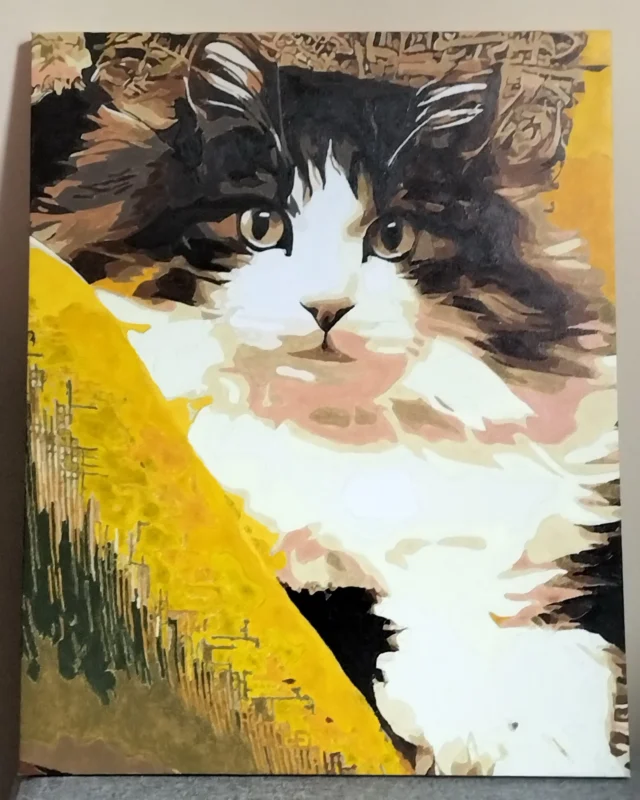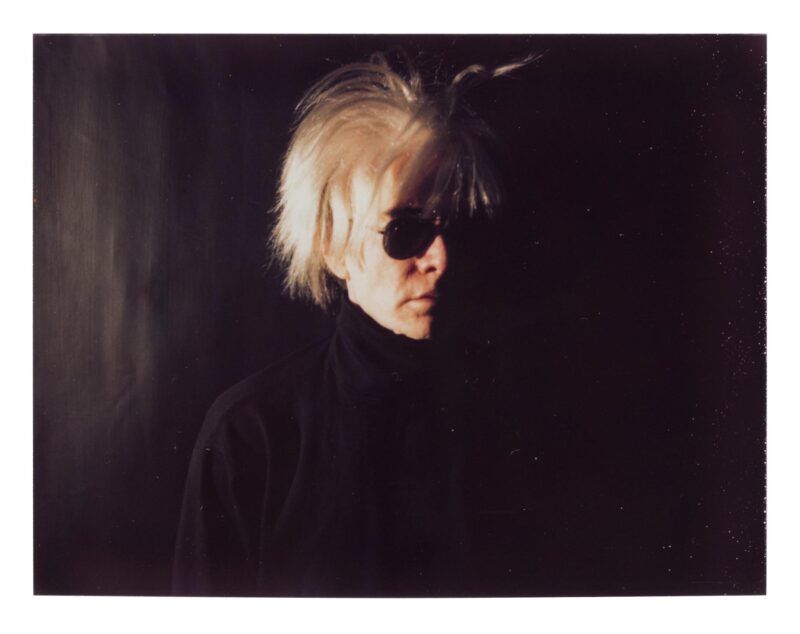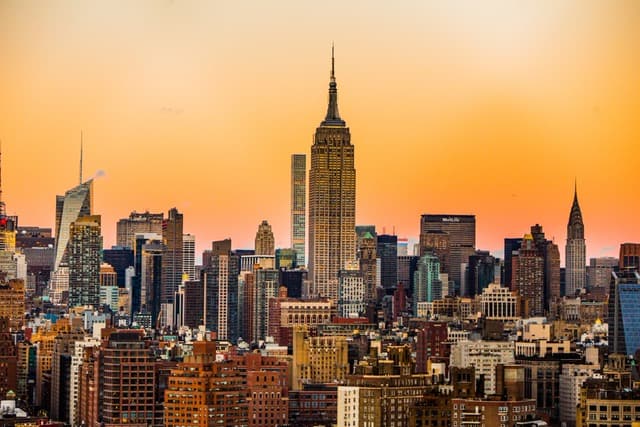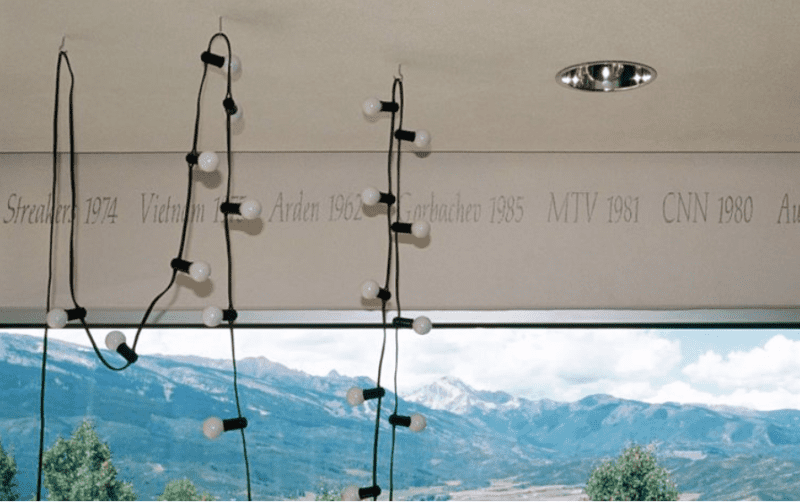The portrait shows the head of a young man with dark hair, pronounced eyebrows and olive-toned skin. The neck of his T-shirt is partially visible. There is a certain fullness about the mouth and a crew-cut neatness to his hair, but beyond these scant facts almost nothing more of him is explicitly described, even though the image amounts to an enormous close-up – the canvas as big as a billboard.
Why is so little of this man disclosed, given the scale and apparent realism of the portrait? This has something to do with the fact that the head is lowered, so he is already an oblique presence. But he is also shown with his eyes closed as if deep in thought, or perhaps in the act of meditation or prayer.
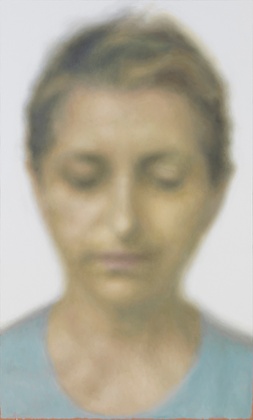
External appearance is a shell. The outer man is not the same as the inner man: that is the overwhelming truth of the picture, and its immediate effect is to send the viewer into deep thought as well.
Portraits make people present; that, at least, is the usual idea. But the works of the Iranian painter YZ Kami offer a different interpretation of presence than most. His sitters appear in a pensive condition, eyes shut to the visible world, as if they were seeing some inner world both within and beyond. Ethereal and pale, characterised by a soft sfumato haziness, they are also detached and unsettling. The closer you get to these gigantic people, the more they seem to withdraw.
Kami was born in 1956 to a Shia family in Tehran. His mother was a portrait painter. He studied philosophy at the Sorbonne in Paris but soon left for New York, and by the 1990s had found fame with delicate portraits of young contemporaries who had died of Aids.
Even then a sense of the spiritual life suffused his work (he is something of a Sufi scholar). His best-known series, In Jerusalem, presents portraits of all the religious leaders – a Catholic cardinal, an Eastern Orthodox bishop, Sephardic and Ashkenazi rabbis and a Sunni imam – who came together in 2005, for once reconciled, in fierce opposition to a gay pride march to be held in Jerusalem. But when you looked at these paintings – shown at the Venice Biennale – what you saw was a quintet of kindly old grandpas whose intolerance was entirely invisible. We are not our faces. So how can the inner man be depicted?
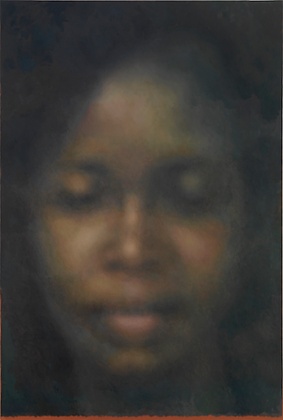
This question comes to the fore once again in Kami’s new show at the Gagosian Gallery, which includes many portraits of people withdrawn in contemplation or actively praying. One of them is the painter’s mother, eyes closed, thought held inside her like a breath. Who the others might be is not immediately apparent, although the majority are young men, some perhaps Iranian, each painted with careful tenderness. And this way of painting is the point. Kami’s portraits are blurred, soft-edged, dappled in their many colours, although the tone is always even and pale. The brushwork is so self-effacing you can scarcely see how these faces materialise on the surface. Monumental and yet modest, matt and yet radiant, still but somehow pulsing with energy: this is an art of paradoxes.
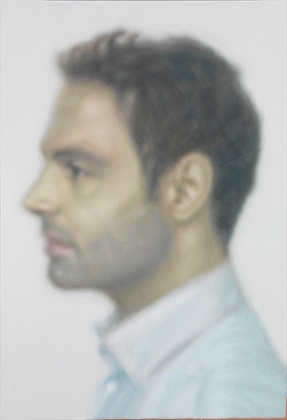
It is also intrinsically philosophical. What would happen if these sitters opened their eyes, for instance – would all be revealed? This question is proposed several times in the show. Kami paints people with their eyes open in profile (it doesn’t work: they are reduced to cameos of themselves), and with his usual massive frontality. Still they appear remote and unknowable, like people seen through mist.
Lately he has painted praying hands (portraiture by other means). These hands seem to surge upwards like the prayers they embody and imply. You look to see if this is all in the flowing brushwork, but as usual Kami’s art conceals its own making. The hands rise like a candle in the darkness; at the very least, they are an illumination and a pictorial sign of hope.
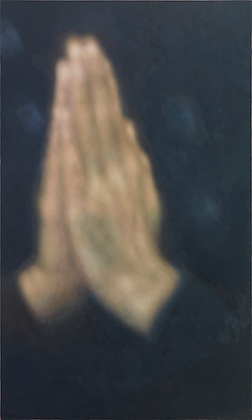
How can one depict the inner being, the private thoughts, the spiritual beliefs? Kami is prodigiously aware of the limitations of portraiture. Yet it is obvious from these paintings, with their intense aspect of interiority, of trying to make visible the invisible, that he is thinking about this dimension of our lives as few other contemporary painters. So although his portraits are by nature impermeable, resistant to emotional communion, they are also candidly open in their monumental scale. And they share a particular kind of radiance that seems to emerge from another series of paintings in this show.
These are big, beautiful abstracts of soft white light. Sometimes they centre on a bright circle that might have overtones of windows or voids; and in fact the series turns out to have the architectural title Domes. So perhaps this is a kind of abstract figuration, and Kami is painting actual places. Indeed, each canvas turns out to be composed of thousands of tiny mosaics of white paint. How the light gets into each mosaic, however, is not obvious, for the radiance seems to hover outside the canvas like a sea haar. There is a serenity to these works – these objects of contemplation – that proves unexpectedly affecting.
And this light is present in the portraits too. So although these people appear out of reach, unknowable, ultimately alone, they are united by this gentle aesthetic. The appearance of remoteness is qualified by the sense of empathy.
• YZ Kami: Paintings is at the Gasogian Gallery, London WC1 until 30 May
guardian.co.uk © Guardian News & Media Limited 2010
Published via the Guardian News Feed plugin for WordPress.
